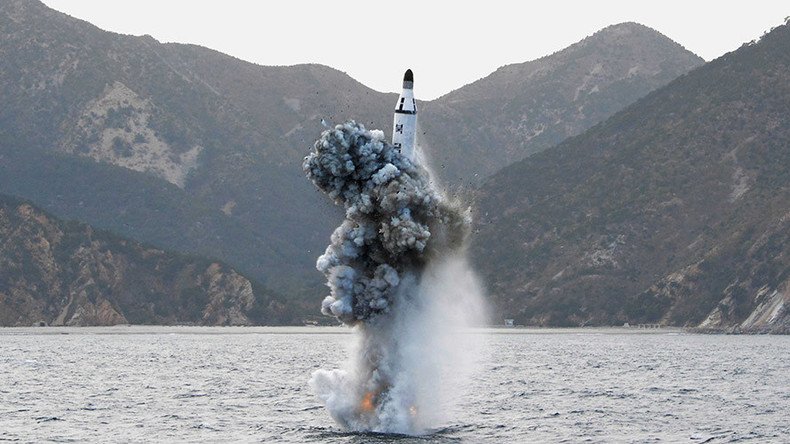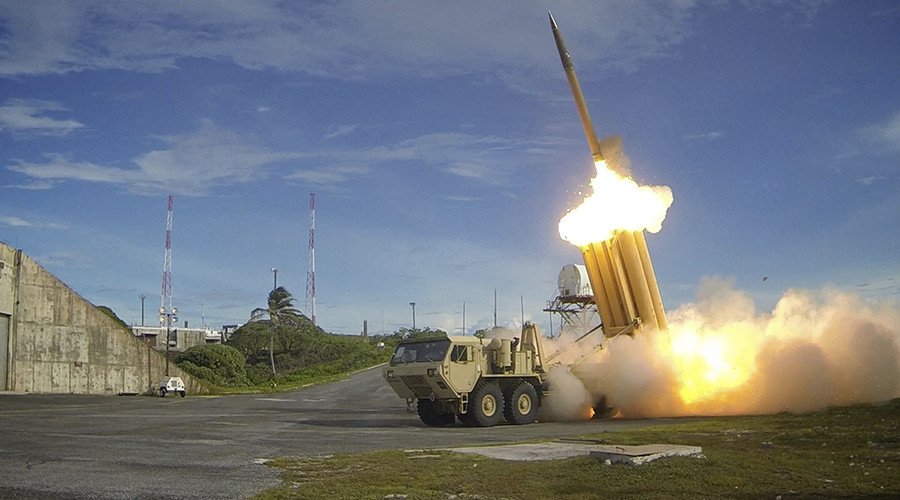N. Korea’s ‘biggest military project’ readying to churn out new & bigger ballistic subs

North Korea is set for an upgrade of its ballistic missile capability, as latest photos reveal progress on its dockyards, which will be able to assemble and house bigger, newer submarines. The country conducted an underwater missile launch earlier this month.
38 North, a program at the US-Korea Institute at SAIS, which analyzes new information from the secretive county, has been examining commercial satellite imagery from last week, of what it claims is a new construction hall at the Sinpo South Shipyard, on the country’s eastern coast.
“The status of work inside the hall remains unclear, but when it is finished North Korea will be able to build and launch new submarines much larger than the existing Gorae-class, including a new class of ballistic missile submarines. Moored alongside the launching way are three small vessels and a barge working to clear underwater obstacles.”
RT kiddaaron: #NorthKorea making progress on ballistic-missile submarine program upgrades, 38 North says. … pic.twitter.com/pqLKSVzr5P
— NTA•NEWS™ (@nothiefs) July 21, 2016
It was a Gorae-class sub that conducted a test ballistic missile launch – in contravention of a UN resolution – on July 9. It was the third such test since December, and while it was a failure, the launch proceeded to a further stage than the previous two.
The single completed 2,000-ton, 67 meter-long Gorae submarine is thought to be based on old Eastern Bloc designs, but according to IHS Jane’s, a defense publication, North Korea is now constructing two 150-meter long pens capable of housing two newer designs.
#DPRK: #NorthKorea building new #submarine pens, #Mayang Do #Naval Base @IHS4DefRiskSechttps://t.co/y1X0mlfduLpic.twitter.com/ErmlAVxG69
— Luc SPIGHEL (@LucSpighel) July 23, 2016
“Satellite imagery from 8 May 2016 revealed that construction on the pens had progressed to the extent that portions of them were being covered with earth,” said Jane’s, which also obtained its analysis from commercially-sourced photos.
The combined analysis of all the work at Sinpo South, likely begun in 2009, suggests that it is currently “the largest active military building project in North Korea.”
Although North Korea is also conducting regular tests from land-based sites, “the massive investment North Korea is making into building the new submarine bunker at Sinpo suggests it will be used to protect its most prized naval asset – the ballistic missile submarine capability it is currently developing.”
Jane’s suggested that the new docks could make it simpler for submarines to slip into the water unmonitored, creating “uncertainty” and a “deterrent” to opposing forces. If successful, the submarines could reach not only South Korea, but also the West Coast of the United States, before launching their projectiles, which could, in theory be armed with nuclear warheads.

But Washington and Seoul have also upped their defensive capabilities.
The DURAN Mark-1 built by the South Korean conglomerate Daewoo, has been completed according to Yonhap, and will detect enemy submarines using the radiation that they emit underwater.
Meanwhile, the US and South Korea have finalized the agreement to extend Terminal High Altitude Area Defense (THAAD) to the Korean peninsula. THAAD, already deployed in Guam and Hawaii, would shoot down a ballistic missile, as it descends down toward its target.












